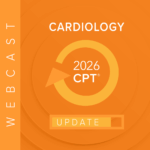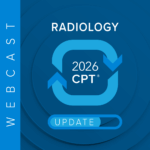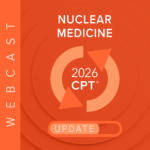The basic foundation for any medical coding or clinical documentation integrity (CDI) professional includes the ICD-10-CM/PCS Official Guidelines for Coding and Reporting, the American Hospital Association (AHA) Coding Clinic advice, the American Health Information Management Association (AHIMA) Code of Ethics and Standards of Ethical Coding, and other professional industry-accepted practice briefs. These extremely important publications are truly essential, and must not be ignored or forgotten. Keeping an eye on the basics is truly essential for coding accuracy and compliance.
I will briefly discuss a few of these, starting with the ICD-10-CM/PCS Official Guidelines for Coding and Reporting, which tell us on the first page the following:
Adherence to these guidelines when assigning ICD-10-CM diagnosis codes is required under the Health Insurance Portability and Accountability Act (HIPAA). The diagnosis codes (Tabular List and Alphabetic Index) have been adopted under HIPAA for all healthcare settings. A joint effort between the healthcare provider and the coder is essential to achieve complete and accurate documentation, code assignment, and reporting of diagnoses and procedures. These guidelines have been developed to assist both the healthcare provider and the coder in identifying those diagnoses that are to be reported. The importance of consistent, complete documentation in the medical record cannot be overemphasized. Without such documentation accurate coding cannot be achieved. The entire record should be reviewed to determine the specific reason for the encounter and the conditions treated.
The directive on this initial page of the Official Guidelines is one that really sets the tone for all of us. Reading over the Guidelines completely and referring to them often is something that is part and parcel to the coding process, auditing, and also education.
The AHA ICD-10-CM/PCS Coding Clinic advice tell us that it “is the official publication for ICD-10-CM/PCS coding guidelines and advice as designated by the four cooperating parties. The cooperating parties listed below have final approval of the coding advice provided in this publication: (the) American Hospital Association, American Health Information Management Association (AHIMA), Centers for Medicare & Medicaid Services (CMS, formerly HCFA), (and the) National Center for Health Statistics.”
It takes some dedication and commitment to read over the quarterly paid publication. Effort should be made to review and discuss this publication among your staff, not just individually. Have a discussion as a group to ensure a clear and succinct understanding from all staff. This type of group discussion can also bring forth questions that need clarification. Clarification can be obtained through the online coding question submission at the AHA Coding Clinic website: https://www.codingclinicadvisor.com/
The AHIMA Standards of Ethical Coding really drives home much of who and what we are as health information management (HIM) medical coding professionals. The following is a small portion of the standard:
- Query and/or consult as needed with the provider for clarification and additional documentation prior to final code assignment in accordance with acceptable healthcare industry practices.
- Refuse to participate in, support, or change reported data and/or narrative titles, billing data, clinical documentation practices, or any coding related activities intended to skew or misrepresent data and their meaning that do not comply with requirements.
- Facilitate, advocate, and collaborate with healthcare professionals in the pursuit of accurate, complete and reliable coded data and in situations that support ethical coding practices
Obtain the full Standards of Ethical Coding document and read it over carefully, as it contains several excellent elements and guidance. It’s a good idea also to read over these Standards annually, as this helps to refresh the specifics.
The AHIMA/ACDIS practice brief for querying, titled Guideline for Achieving a Compliant Query Practice, updated in 2022, is well-known to be an industry standard, and even the gold standard, to which to adhere.
Per the practice brief, “query definition: a communication tool or process used to clarify documentation in the health record for documentation integrity and accuracy of diagnosis/procedure/service code(s) assignment for an individual encounter in any healthcare setting. A query may be developed by a healthcare professional or through a computer autogenerated query process.” You can obtain this particular practice brief at: ACDIS AHIMA Guidelines for a Compliant Query 2022_addendum 2023.pdf
As with the sources mentioned above, these are essential forms of guidance for any and all medical coding and CDI professionals. The Code of Ethics and Standards of Ethical Coding add further emphasis to professional integrity and decorum we all need to follow. Do not be afraid to use and adhere to these essential and official guides.
Now, let us come back to compliance – and we only have to read the U.S. Department of Health and Human Services (HHS) Office of Inspector General (OIG) publication regarding healthcare compliance for this. Take a look at the investigations and audit reports to learn about ongoing healthcare compliance issues.
A few of the recent OIG published areas of concern include the following:
- Medicare Advantage Compliance Audit of Diagnosis Codes that EmblemHealth Submitted to CMS;
- Medicare Advantage Compliance Audit of Specific Diagnosis Codes that Health Assurance, Pennsylvania, Inc Submitted to CMS;
- Medicare Advantage Compliance Audit of Specific Diagnosis Codes that Humana Health Plan, Inc Submitted to CMS;
- Additional Oversight of Remote Patient Monitoring in Medicare is Needed; and
- Medicare Improperly Paid Hospitals an Estimated $79 Million for Enrollees Who Had Received Mechanical Ventilation.
Per the OIG website, “OIG has developed a series of voluntary compliance program guidance documents (CPGs) directed at various segments of the healthcare industry, such as hospitals, nursing homes, third-party billers, and durable medical equipment suppliers, to encourage the development and use of internal controls to monitor adherence to applicable statutes, regulations, and program requirements.”
The OIG recently announced the following: “today we are announcing that OIG anticipates publishing additional CPGs, date TBD, addressing hospice and pharmaceutical manufacturers. If you would like to share information or suggestions regarding what should be included in the CPG for any of these industry segments, then please send your written comments or suggestions directly to Compliance@oig.hhs.gov.” So, this is something to submit your thoughts on – and be sure to watch for and review the CPGs once released.
We always need to be proactive, attentive, and diligent, with regard to medical coding and healthcare compliance overall. We need to avoid having a blind eye and being complacent with these essentials.
I believe we all want to achieve accuracy and compliance with our coding and CDI efforts, so following and adhering to these essentials is an expectation for each and every one of us.













